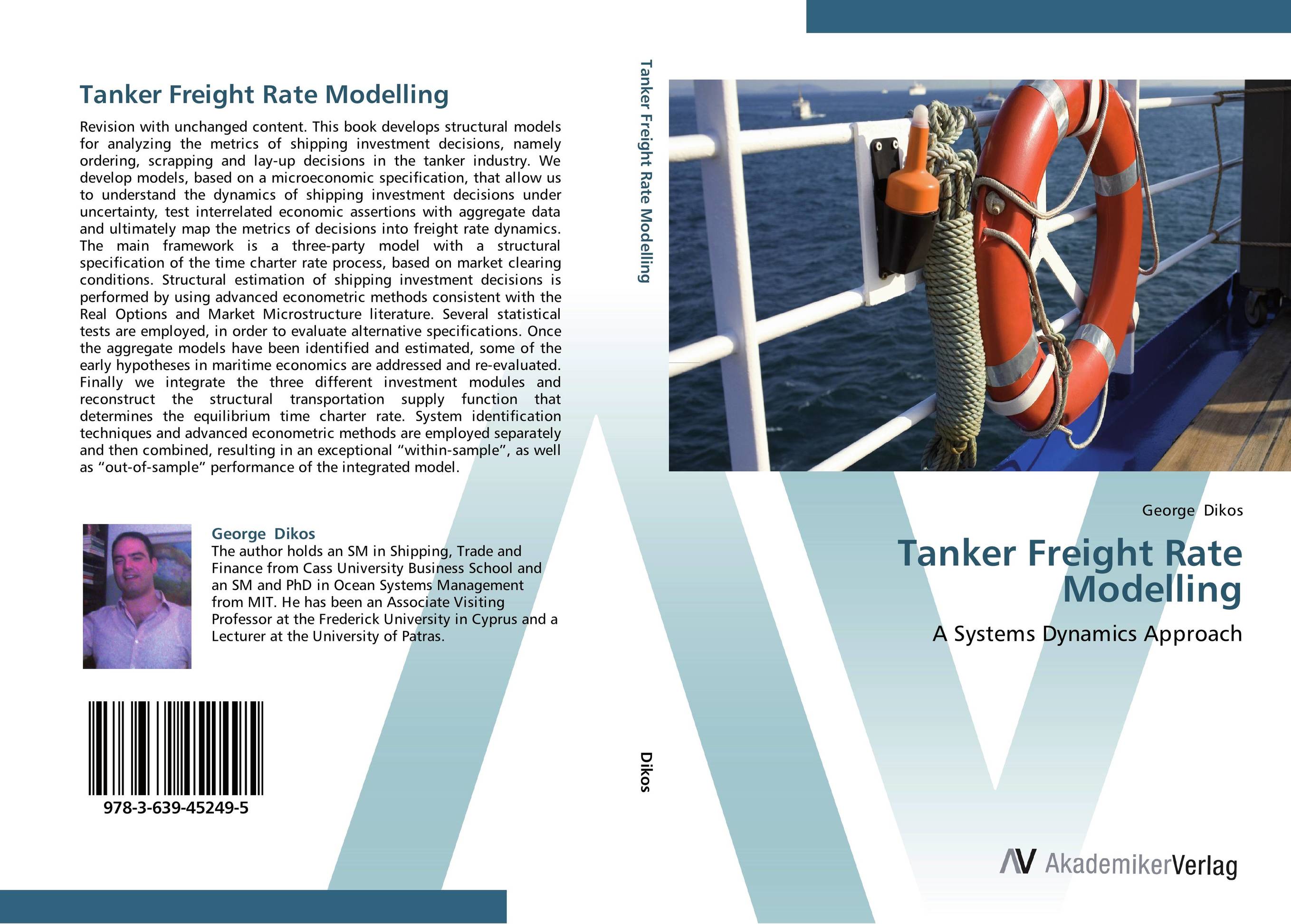| Поиск по каталогу |
|
(строгое соответствие)
|
- Профессиональная
- Научно-популярная
- Художественная
- Публицистика
- Детская
- Искусство
- Хобби, семья, дом
- Спорт
- Путеводители
- Блокноты, тетради, открытки
Tanker Freight Rate Modelling. A Systems Dynamics Approach

В наличии
| Местонахождение: Алматы | Состояние экземпляра: новый |

Бумажная
версия
версия
Автор: George Dikos
ISBN: 9783639452495
Год издания: 2012
Формат книги: 60×90/16 (145×215 мм)
Количество страниц: 188
Издательство: AV Akademikerverlag
Цена: 44376 тг
Положить в корзину
| Способы доставки в город Алматы * комплектация (срок до отгрузки) не более 2 рабочих дней |
| Самовывоз из города Алматы (пункты самовывоза партнёра CDEK) |
| Курьерская доставка CDEK из города Москва |
| Доставка Почтой России из города Москва |
Аннотация: Revision with unchanged content. This book develops structural models for analyzing the metrics of shipping investment decisions, namely ordering, scrapping and lay-up decisions in the tanker industry. We develop models, based on a microeconomic specification, that allow us to understand the dynamics of shipping investment decisions under uncertainty, test interrelated economic assertions with aggregate data and ultimately map the metrics of decisions into freight rate dynamics. The main framework is a three-party model with a structural specification of the time charter rate process, based on market clearing conditions. Structural estimation of shipping investment decisions is performed by using advanced econometric methods consistent with the Real Options and Market Microstructure literature. Several statistical tests are employed, in order to evaluate alternative specifications. Once the aggregate models have been identified and estimated, some of the early hypotheses in maritime economics are addressed and re-evaluated. Finally we integrate the three different investment modules and reconstruct the structural transportation supply function that determines the equilibrium time charter rate. System identification techniques and advanced econometric methods are employed separately and then combined, resulting in an exceptional “within-sample”, as well as “out-of-sample” performance of the integrated model.
Ключевые слова: shipping, forecasting, Systems Dynamics, freight rates, Real Options, quantile regressions, decisionmetrics, structural estimation, Maritime Transport, tankers



